THE SPARKLING SEASIDE TOWN OF LA ROCHELLE
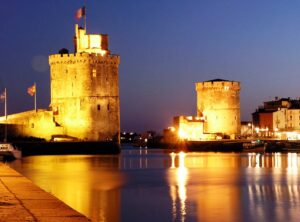
Less than 2 hours by car up the coast from Bordeaux will take you to the beautiful port city of La Rochelle. One of the country’s most important seaports from the 14th to 17th centuries, the city’s luminous limestone façades glow in the bright coastal sunlight. Although its old commercial harbour, the Vieux Port, isn’t deep enough for the modern ships of today, it’s now one of the largest yachting harbours along the French Atlantic coast. With its straight streets, arcaded walkways, half-timbered houses adorned with fearsome gargoyles and slate tile roofs, shady promenades on the site of the city’s ancient fortifications, and some fabulous lighthouses, it’s one of our favourite places in France, and a very rewarding destination for visitors to discover.
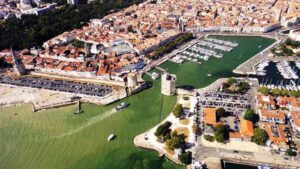
We had originally planned to drive directly up to La Rochelle from Bordeaux, with only a couple of brief stops along the way. However, there were so many fascinating and picturesque detours, we ended up taking a couple of days to stop and enjoy some delightfully unexpected sights before arriving at La Rochelle.
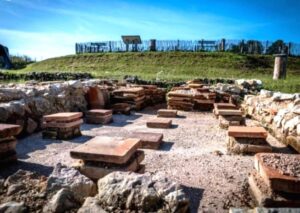
Remains of Roman villas and salt evaporation ponds have been found, although archaeological finds trace the history of the port of La Rochelle, on the Bay of Biscay, back before the Gallo-Roman period to the Gallic tribe of the Santones. The Romans developed salt production along the coast and also wine production, shipping these various products from La Rochelle throughout the Empire. Although the town was founded during the 10th century, it became an important trading port in the 12th century, when the Dukes of Aquitaine granted it a charter as a free port after they had destroyed the neighbouring town of Châtelaillon.
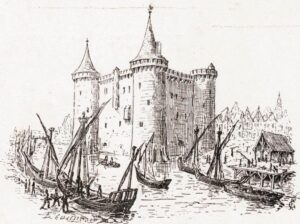
The opening of the English market following the second marriage of Eleanor of Aquitaine in 1152 to the Plantagenet, Henry II, plus the presence of the Knights Templar and the Knights of St John of Jerusalem, quickly make this small town the largest port on the Atlantic coast. Henry II had the Château Vauclair built in 1185, but it was demolished around 1375 on the orders of Charles V after the Siege of La Rochelle, and its stones were used to build a new fortification wall. Remains of Château Vauclair are still visible in the Place de Verdun.
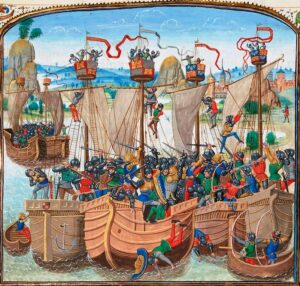
During the Hundred Years’ War, La Rochelle changed hands a number of times, but was finally captured by the French in 1372. Until the 15th century, La Rochelle was the largest French harbour on the Atlantic coast, dealing mainly in wine, salt and cheese.
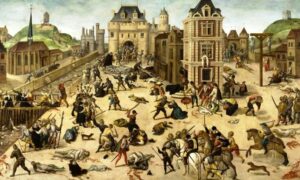
During the Renaissance, La Rochelle adopted Protestant ideas. Calvinism started to spread in the region, resulting in violent suppression on the orders of Henri II, including some so-called heretics being burned at the stake in La Rochelle in 1552. Despite these measures, conversions to Calvinism continued, not only because of religious convictions, but also the desire for political independence, and popular opposition to royal expenses and the many calls for heavy contributions towards the building projects to fortify the coast against England.
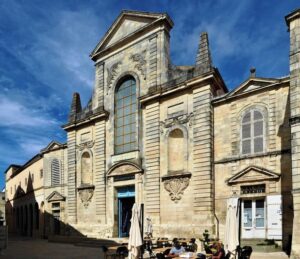
La Rochelle became a centre for the Huguenots, and using Geneva as the model, the city declared itself an independent Reformed Republic. In effect, La Rochelle became an entity described as “a state within a state.” Needless to say, this led to numerous conflicts with the Catholic central government. After the Massacre of St Bartholomew’s Day in 1572, during which an enormous number French Protestants were killed, many of the survivors took refuge in La Rochelle.
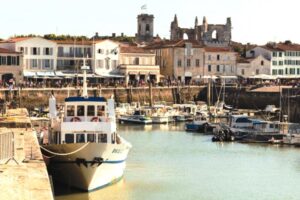
Despite having been granted certain privileges, such as freedom of worship under Louis XIII, in 1622 La Rochelle sided with the English, who had invaded the nearby Île de Ré.
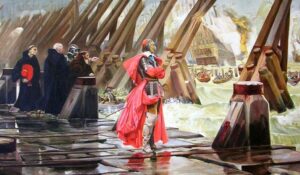
The town was blockaded for 14 months during the Siege of La Rochelle, along with other Protestant cities such as Sancerre, by the French king’s minister, Cardinal Richelieu, who built a vast sea wall to prevent English ships from relieving their allies. There’s a marker buoy in the bay which marks the place where Richelieu’s sea wall was built. The city finally capitulated, around three-quarters of the population having starved to death. Under continuing persecution, many Huguenots emigrated, founding such cities as New Rochelle, in the vicinity of today’s New York, in 1689.
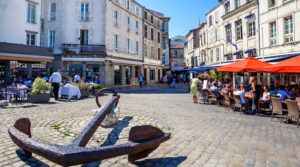
Sea trade helped revive La Rochelle, with regular trade relations with New-France (Canada) and the West Indies. It was the heyday of the great shipowners that also saw the start of an intellectual and artistic influence that these commercial activities brought. There is a 17 stage walk through the town’s historic centre exploring the history that links La Rochelle to Quebec. Ask at the Tourist Office for details.
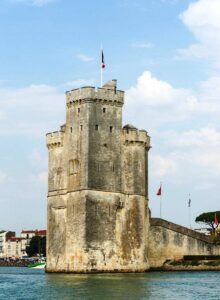
There are some very impressive historic monuments in the town. The most conspicuous is undoubtedly the famous Towers of La Rochelle. Looking out to the Atlantic, at the entrance into the Vieux Port (old port), there’s the Tour Saint Nicolas, built in 1384, named after the patron saint of sailors, and the Tour de la Chaine. At times throughout the city’s history, a chain was stretched between these two towers to stop ships from entering. Today, the Tour Saint Nicolas still looks much as it did in the 1400s. Together with the Tour de la Chaîne on the opposite bank, it’s an impressive sight, and beautifully illuminated at night. You can climb the towers to get fabulous views over the city port and sea from their terraces, and all year round, the towers host exhibitions and events.
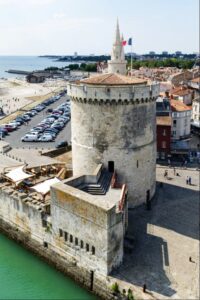
King Louis XI visited the Tour de la Chaine in 1472, and legend has it that he etched an inscription on one of the tower’s windows with the diamond on his finger. During the 17th century, the tower was used to store gunpowder. During the Fronde uprising (by the nobility to check the increasing power of the monarchy), the tower exploded, and for 300 years was left open-topped. Important restoration work took place in the 20th and 21st centuries where the castellated rampart walkway was rebuilt, a new roof was put on and 2 indoor floors were reinstated.
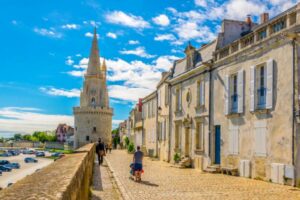
Not far from these two towers is the Tour de la Lanterne, the oldest lighthouse on the Atlantic coast, its origins dating back to the end of the 17th century. Located on the corner of the sea wall of the St-Jean-du-Port district, it’s the last medieval lighthouse on the Atlantic coast, and has always been both a lighthouse and a prison. There are over 600 examples of graffiti carved into its walls by prisoners over a period of 300 years—mostly English, Dutch and Spanish sailors who were captured at sea, as well as Protestants and militants from the Vendée (a counter-revolution in the Vendée region of France during the Revolution). The Tour was the residence of the “ship disarmer”, who was in charge of disarming the ships before they were permitted to enter the port, and it features a monumental arrow and a lantern to guide sailors. Topped by an octagonal Gothic spire and standing at 55m tall, you can see it from all around the Pertuis d’Antioche—the strait between the islands of Ré, Aix and Oléron—and it’s part of the “sea look-out” for military surveillance of the coast.

The streets immediately behind the harbour are the centre of activity in the town, and where visitors tend to spend most of their time. There’s a broad boulevard around the harbour, ideal for promenading and seeing much of the action of the town. There are also a lot of market stalls here, buskers and street artists and a wide range of restaurants. Those around the harbour front are mostly ‘cheap and cheerful’ seafood bistros, and many are very good.
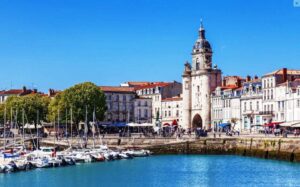
However, for more upmarket restaurants in town, follow the street that starts from the end of the harbour-front eateries, that enters the old town. At the point where it leaves the harbour, the whole street is lined with good quality restaurants. There are numerous entry points into the town, but the most impressive entrance is next to the Grosse Horloge (large clock tower).
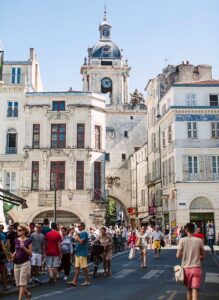
The town’s arcaded streets allow market traders to display their merchandise while sheltering them from inclement weather. Make sure you walk through the pretty rue de l’Escale, which is famous for being paved with cobblestones that came from St-Laurent, Canada, as ballast on the merchant ships.
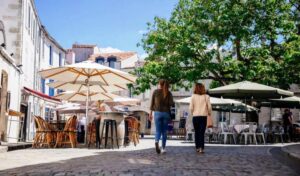
The St-Nicolas district, which used to be the fishermen’s district, is between the railway station and the Vieux Port. Full of charm with its cobbled streets, its lovely little square is nestled in amongst the trees, and its houses tucked away under the old arcades. It’s a lively little quarter, with patisseries, butchers and restaurants on the inviting little terraces. It’s rather bohemian, with art galleries and bookshops, second-hand shops, pretty window displays and outdoor stalls, it’s perfect for relaxing strolls.
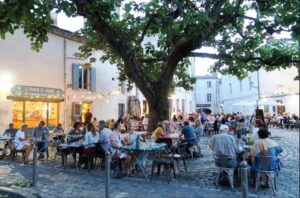
The Place de la Fourche is the perfect setting for an outdoor lunch. If you enjoy hunting for unique antiques and treasures such as old postcards, vintage utensils, glassware, and lots of silverware engraved with family monograms, go to Place de la Motte Rouge, for the flea market held there every Thursday and Saturday under the shady trees. Every summer a crafts and creative market also sets up here, and it’s a very pleasant pastime strolling along browsing among their pretty, white wooden stands.
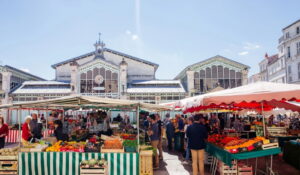
Don’t miss a visit to the daily market (Wednesday is the biggest day), in a 19th century building in St-Nicolas. It’s located between the railway station and the Vieux Port. Apart from the fabulous display of fresh produce, this market has an “à table” local producers scheme. Basically, you get a plate at the market, buy some bread, wander around and choose what you want from the stall holders—fresh, succulent oysters, wonderful cheeses, pâté, charcuterie, seasonal fruits etc., then enjoy your lunch selection onsite.
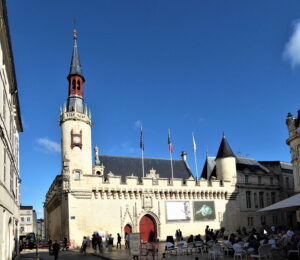
One of the most impressive of all the historic monuments in La Rochelle is the Hotel de Ville—a lovely 17th century building with turrets and elaborate carvings, inside a fortified wall.

Another beautiful building, the so-called Maison Henri II, is as lovely as the Hotel de Ville. Although it’s really just a façade of a house overlooking a small garden, it has a highly decorative appearance with numerous columns, and dates from the 16th century.
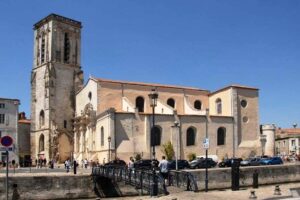
The Église Saint-Sauveur is a mix of styles from different centuries and periods of construction. A Gothic church on the site of an earlier 12th century church was demolished during the Wars of Religion, although the belltower remains. Rebuilt again in the 17th century, the replacement church burned to the ground except for the façade, and was rebuilt yet again in the early 18th century.
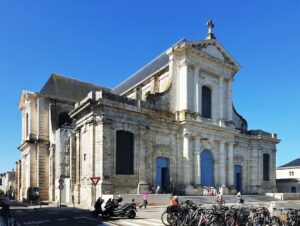
Other sights of interest include the Cathedral St-Louis on Place du Verdun, the Chamber of Commerce and the Law Courts. Dating from 1706, the pretty Cloister of the Dames Blanches is worth a look, and is often used for exhibitions. The cobbled arcaded rue d’Escale, leads to Maison Nicolas Venette, a house with numerous gargoyles and busts of doctors from antiquity. Venette was an important scientist and writer of various textbooks.
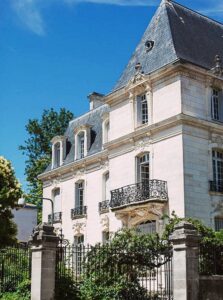
All these fine buildings are in a lovely setting, with numerous townhouses and pretty streets, and much to enjoy as you wander about. This part of the old town also has numerous boutiques and other shopping opportunities to discover.

The perfect end to an enjoyable day exploring La Rochelle is to take a stroll to La Guignette. Well known by the locals and even beyond, this wine cellar is an institution here. Housed in a blacksmith’s old workshops, La Guignette embodies such traditional places, where the decor reflects life in the district over the last decades. The speciality of the house is an aromatic wine-based fruit drink: the green one is apple, the red is made from red berries and the yellow one is citrus fruit.
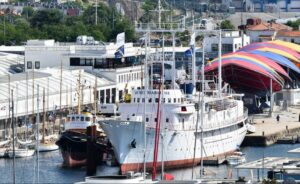
Few visitors discover one of the locals’ favourite bars. Head to the Maritime Museum, and next to it is the ‘France I’, a former meteorological ship. It’s now a bar and restaurant, and a great place for an aperitif and simple snack, such as a seafood platter, or the inevitable oysters. You can relax and enjoy the sunset from the timber deck, and pretend you’re about to cast off!
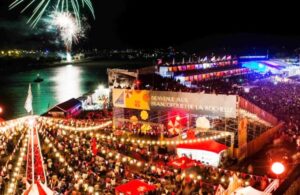
If you find yourself in La Rochelle during July, you’ll encounter the annual Francofolies. Founded in 1985, this is a huge 5 day music festival, and aims at promoting French-language music, featuring both up-and-coming musicians as well as established artists, and sometimes a non-French guest—this year, Sting will appear. Around 100 concerts are programmed each year on several stages spread through the city, and one of the main venues is at the foot of the Towers. This festival attracts hundreds of thousands of visitors, so booking accommodation could be problematic. This year, 2024, the dates are Wednesday 10 to Sunday 14 July.
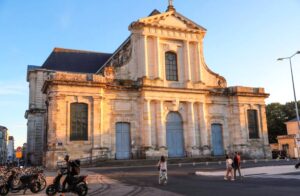
La Rochelle has two outstanding museums. The museum of Art and History of La Rochelle has brought together the Museum of the New World and the Museum of Fine Arts. The city was one of the major trading ports and emigration points to the New World, and it was the last sight thousands of emigrants saw before setting sail for the Americas and the Antilles. The Museum of the New World explores the relationship between France and the Americas, and its collection includes paintings, sculpture, ancient maps and decorative arts as well as 18th century French furniture and rare American colonial furniture.

To discover the coast of La Rochelle, take a boat ride to Fort Boyard or go island hopping over to Ile de Ré, Ile d’Oleron and Ile d’Aix. Two hour, half day or full day trips are offered, and they leave from the Vieux Port, Cours des Dames or the Esplanade Saint Jean d’Acre. Pop into the Tourist Bureau for information.

The beautiful port of La Rochelle on the Atlantic coast is a very rewarding destination, with much to offer the visitor, with a vibrant maritime history, charming old port, Europe’s largest marina for pleasure boats, rich architectural heritage, cobbled streets, lively atmosphere and fantastic gastronomy. The city is often referred to as La Ville Blanche, due to its luminescent white limestone buildings, that for many visitors, makes it the most attractive resort town in the country.
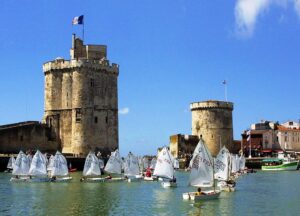


Love the history, as always.
Hi Nadine,
Thanks for your kind words. La Rochelle has something for everyone, whether it’s “just” its location, the wonderful food available, especially if you enjoy your seafood, or its very colourful history. It ticks every box a visit is likely to have–including us! Cheers, Cheryl
Once again, thanks Cheryl. I love La Rochelle. My friend Alexandrine grew up there . Her father had the bakery in the old town. She has also taken me to Ile de Re. And yes, La Rochelle does glisten in the sunlight .
You’re so right about La Rochelle, and glad you too have enjoyed its charms. It has so much to see and do, such as a visit over to Ile de Re etc. and also inland to other villages and towns. However, it makes a place extra-special when you’ve got a personal connection with it, as you do via your friend. Cheers, Cheryl